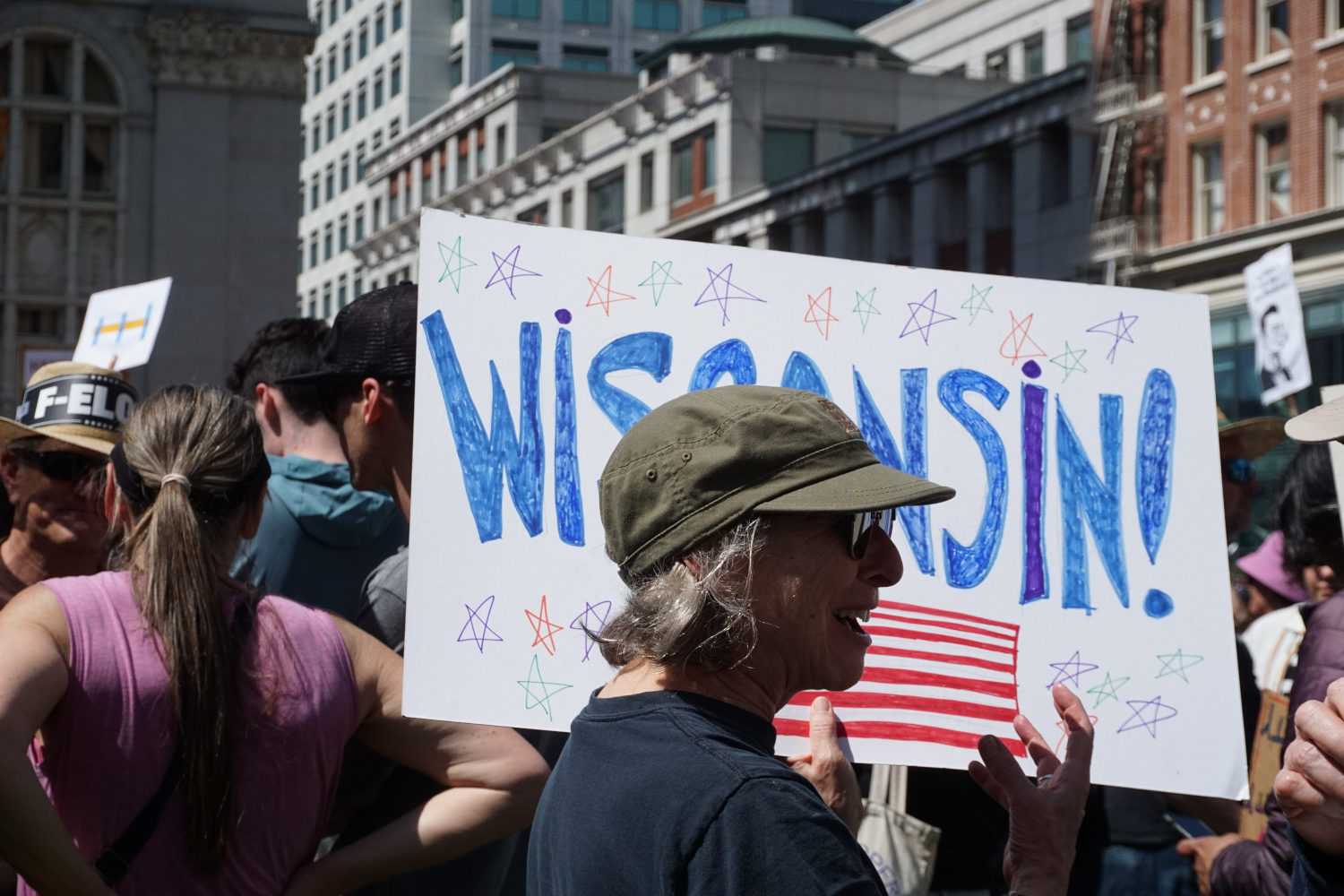Hands Off Oakland





When hackers exploited a bug in Parler to download all of the right-wing social media platform's contents last week, they were surprised to find that many of the pictures and videos contained geolocation metadata revealing exactly how many of the site's users had taken part in the invasion of the US Capitol building just days before. But the videos uploaded to Parler also contain an equally sensitive bounty of data sitting in plain sight: thousands of images of unmasked faces, many of whom participated in the Capitol riot. Now one website has done the work of cataloging and publishing every one of those faces in a single, easy-to-browse lineup.
-- Andy Greenberg, "This Site Published Every Face from Parler's Capitol Riot Videos," Wired, January 20, 2021.
As supporters of President Donald Trump took part in a violent riot at the Capitol, users of the social media service Parler posted videos of themselves and others joining the fray. ProPublica reviewed thousands of videos uploaded publicly to the service that were archived by a programmer before Parler was taken offline by its web host. Below is a collection of more than 500 videos that ProPublica determined were taken during the events of Jan. 6 and were relevant and newsworthy. Taken together, they provide one of the most comprehensive records of a dark event in American history through the eyes of those who took part.
-- "What Parler Saw during the Attack on the Capitol," ProPublica, January 14, 2021.
A demographic and economic analysis of the constituencies represented by the 139 Republicans who objected to the certification of at least one states’ election results helps to clarify the social and material conditions in which this right wing authoritarianism has taken root.
In particular, the evidence cuts strongly against the conventional wisdom of Trumpism as “lumpen†Rust Belt rage, originating in the country’s shrinking rural hinterland. Rather, the picture that emerges of districts represented by the most committed Pro-Trump Republicans is one of fast-growing, rapidly diversifying greenfield suburbs where inequalities between white homeowners and their non-white neighbors have been shrinking and low voter turnout has helped deliver large margins to Republican candidates. . . .
The Republican Party’s most Pro-Trump members have been elected by higher income white homeowners in the fast-growing exurban fringe. They feel the social status traditionally associated with their identity as white Christians is being degraded and that left wing political movements pose a threat to their livelihoods and political power. In reaction, they have lashed themselves to a movement within the Republican Party led by President Trump that seeks to defend the privileges of property-owning white Americans in our political system, economy, and public life.
-- Jacob Whiten at Medium.com, January 11, 2001
Fired up by the Great Orator, they charged their way into the Capitol building, which turned out to be as heavily fortified as a slice of angel food cake. The proximate aim of the action was to get inside and stop the certification of the Electoral College vote so that Trump could win, the way Marty McFly went back in time to make sure his future parents fell in love so that he could be born. In one widely circulated video, police with riot shields tried to block the entry of one group of rioters, who yelled at them, “Pussies! Pussies!†And that was the first sign of some possible incoherence at the heart of the revolution. What was the cops’ manly option? Shooting the rioters? And more important: Isn’t this the pro-cop group, the party of law and order?
Once inside, they were bent on proving themselves fierce and intimidating—and they were those things. But when they got to the National Statuary Hall, on the second floor, where velvet ropes indicate the path that tourists must take, they immediately sorted themselves into a line and walked through it. In other words, they were biddable. They were men (and, yes, some women) lost in a modern world that no longer assumed they come first. They were looking for someone to tell them what to do. Trump told them what to do. So did the velvet ropes.
-- Caitlyn Flanagan, "Worst Revolution Ever," The Atlantic, January 10, 2021
[S]omething unexpectedly profound happened: a deus ex machina that lifted the curse of Trump from the careers of conservative war hawks and right-wing young lions, whose ambitions until yesterday had been fettered by the presidential cult. Today was the signal for a long-awaited prison break. . . . the Republican Party has just undergone an irreparable split. By the White House’s Fuhrerprinzip standards, Pence, Tom Cotton, Chuck Grassley, Mike Lee, Ben Sasse, Jim Lankford even Kelly Loeffler are now traitors beyond the pale. This ironically enables them to become viable presidential contenders in a still far-right but post-Trump party. . . . the True Trumpists have become a de facto third party, bunkered down heavily in the House of Representatives. As Trump embalms himself in bitter revenge fantasies, reconciliation between the two camps will probably become impossible, although individual defections may occur. Mar-a-Lago will become base camp for the Trump death cult which will continue to mobilize his hardcore followers to terrorize Republican primaries and ensure the preservation of a large die-hard contingent in the House as well as in red-state legislatures. (Republicans in the Senate, accessing huge corporation donations, are far less vulnerable to such challenges.)
Tomorrow liberal pundits may reassure us that the Republicans have committed suicide, that the age of Trump is over, and that Democrats are on the verge of reclaiming hegemony. Similar declarations, of course, were made during vicious Republican primaries in 2015. They seemed very convincing at the time. But an open civil war amongst Republicans may only provide short-term advantages to Democrats, whose own divisions have been rubbed raw by Biden’s refusal to share power with progressives. Freed from Trump’s electronic fatwas, moreover, some of the younger Republican senators may prove to be much more formidable competitors for the white college-educated suburban vote than centrist Democrats realize. In any event, the only future that we can reliably foresee – a continuation of extreme socio-economic turbulence – renders political crystal balls useless.
-- Mike Davis in the New Left Review's new Sidecar blog, January 7, 2021
Total time a fly sat on Mike Pence's head: two minutes pic.twitter.com/PtI0rKSi5I
— Timothy Burke (@bubbaprog) October 8, 2020
Eric Levitz in New York Magazine on how political institutions keep American politics polarized between a median Democratic position and a right-of-median Republican position now that the urban/rural split between the two parties is entrenched:
By itself, the conservative movement’s apocalyptic paranoia might not constitute an existential threat to American democracy. The depths of the American right’s radicalism are formidable, but its breadth of popular support is not. The donors, activists, and primary voters who set the GOP’s agenda are more ideologically extreme than the Republican Party’s median general-election supporter. And so long as the GOP caters to the former, its national coalition is likely to be a minority one. Thus, if the United States were a majoritarian democracy — in which the Republican Party had to win a majority of the nation’s votes to have a hand in federal governance — then the party might soon find itself with sufficient incentive to marginalize its most extreme elements. But the U.S. is a very different kind of polity.
Every elected branch of the U.S. government structurally overrepresents low-density areas. And since America’s two parties are now polarized along urban-rural lines, the GOP has ballots to burn. Losing the popular vote in six of the last seven presidential elections hasn’t stopped Republicans from holding the White House for a majority of this millennium. Republican senators have represented a majority of America’s population for only two years in the last four decades — but Republicans have boasted Senate majorities for more than half of that period anyway. And many election forecasters expect the pro-Republican biases of the Senate and Electoral College to grow more pronounced in the years to come.
Those biases, combined with midterm elections that inherently favor the sitting president’s opposition — and a two-party system that ensures Republicans will always be the only option for “change†voters when a Democrat is in office — set a high floor beneath how far the GOP can realistically fall. One testament to this reality lies in the mounting evidence that Republicans have actually increased their support among nonwhite voters during the Trump era, even as the party has catered to white racial animus. With only two parties to choose from, socially conservative and/or disaffected nonwhite voters have proved willing to rally to the GOP banner even as Republicans have replaced their dog-whistle appeals to white grievance with foghorns. For these reasons, it is unlikely that Republicans will be consigned to the political wilderness long enough to make a break with the conservative movement thinkable.
-- Eric Levitz, "The RNC Has Made a Compelling Case for America’s Imminent Collapse," New York Magazine, August 25, 2020.